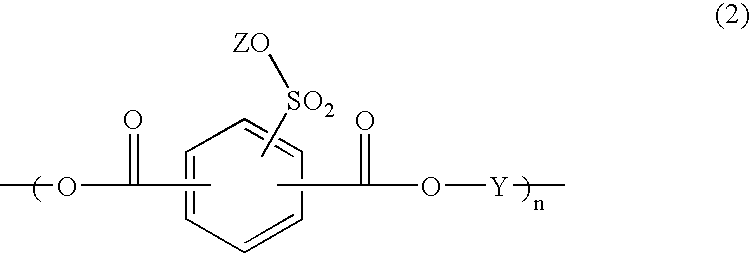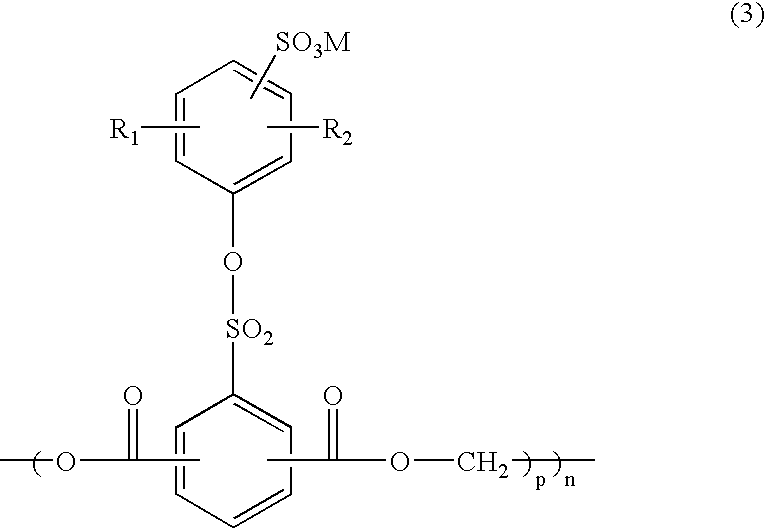Hydrophilic coatings for medical implements
a technology of hydrophilic coatings and medical implements, applied in the field of hydrophilic coatings, can solve the problems of high equipment requirements, unattractive use of hydrophilic coatings on needles, and frequent use of more complex formulations for crosslinking the coating
- Summary
- Abstract
- Description
- Claims
- Application Information
AI Technical Summary
Benefits of technology
Problems solved by technology
Method used
Image
Examples
example 1
Wettability and Tackiness of Various Hydrophilic Formulations.
[0064]For this Example, formulations were prepared and tested on both a stainless steel surface and on a plastic PET film. The formulations were tested for tackiness, durability and wettability. TABLE 1 shows the parts / volume of aqueous stock sulfonated polyester solution to parts of surfactant stock solution to parts of water. The sulfonated polyester stock solution was prepared with 28% by weight of solid in water (EASTMAN AQ 55D is 28% solid sulfonated polyester by weight in water. All of the surfactant stock solutions were prepared as a 3% by weight of surfactant in water. Surfactants tested were Aerosol OT (anionic), Geropon T77 (anionic), Pluronic P105 (nonionic), Pluronic F68, Silwet L7600 and glycerol as a control. The chemical composition of these surfactants is discussed above.
[0065]The hydrophilic coating formulations were prepared by thoroughly mixing the appropriate amount (parts) of sulfonated polyester and ...
example 2
Contact Angle of Water of the Hydrophilic Coatings
[0071]This example demonstrates the wettability of various formulations of the hydrophilic coating on a plastic surface, 5 mil Melinex polyester film available from DuPont. The method of coating the Melinex film was similar to the method described in Example 1. The stock solutions of the sulfonated polyester (AQ55D) and the surfactants used in this example were prepared as described in example 1.
[0072]TABLE 2 shows the contact angle of water measurements of various hydrophilic coatings of the invention as well as Melinex coated with an antifog coating (3M™ Antifog, Part# 3MM 9962 / 387) as a control. The % of sulfonated polyester by weight of total dry weight of the composition was 90–95% for all the formulations presented in TABLE 2. The percentages of surfactant given in TABLE 2 are the percent of surfactant by weight of the total dry weight of the hydrophilic coating.
[0073]Two to five contact angle of water tests, which included bot...
example 3
Hemolysis Test
[0076]The hydrophilic coating with the formulation of 2 part AQ55D (28%); 0.5 part Aerosol OT (3%); 0.5 part Pluronic P105 (3%); 3 part water was tested for hemolytic activity against human whole blood.
[0077]In order to maximize the surface contact between the hydrophilic coating and blood volume, capillary tubes were used to conduct this experiment. Plastic capillary tubes having 1 mm ID were filled with the hydrophilic coating and allowed to stand for 5 seconds. Excess coating solution was drained out by touching the end of the capillary tube with an absorbent tissue paper. The capillary tubes were allowed to dry for at least 20 hours at room temperature inside a tightly sealed container containing copious amount of desiccants.
[0078]A sample of normal whole blood from a human donor was used. The dry capillary tubes coated on the inside with the hydrophilic coating mixture were filled with the whole blood sample by dipping the tubes in the blood at a tilted angle. The...
PUM
| Property | Measurement | Unit |
|---|---|---|
| Temperature | aaaaa | aaaaa |
| Temperature | aaaaa | aaaaa |
| Fraction | aaaaa | aaaaa |
Abstract
Description
Claims
Application Information
 Login to View More
Login to View More - R&D
- Intellectual Property
- Life Sciences
- Materials
- Tech Scout
- Unparalleled Data Quality
- Higher Quality Content
- 60% Fewer Hallucinations
Browse by: Latest US Patents, China's latest patents, Technical Efficacy Thesaurus, Application Domain, Technology Topic, Popular Technical Reports.
© 2025 PatSnap. All rights reserved.Legal|Privacy policy|Modern Slavery Act Transparency Statement|Sitemap|About US| Contact US: help@patsnap.com



